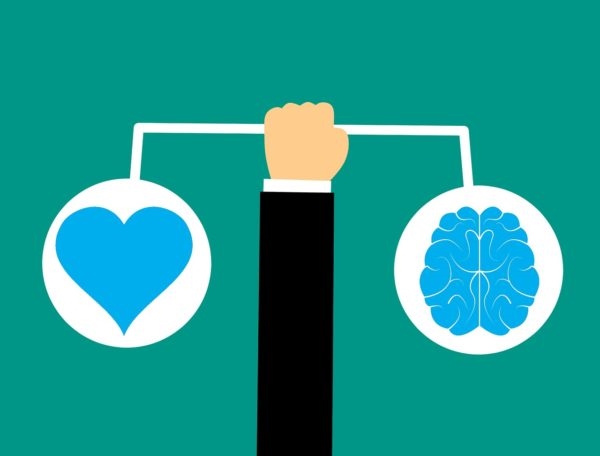— May 31, 2019

mohamed_hassan / Pixabay
Over time, every business will come to a point in its strategic planning in which it will need to institute a major organizational change, whether it be implementing a new technology, establishing different operational processes, restructuring staff, or changing employee culture. On paper, such changes seem relatively easy to carry out—management defines the change, trains the company’s employees, and then executes on the change.
However, in reality, organizational change has an extremely high rate of failure. According to research by McKinsey & Company, as many as 70 percent of change programs fail to achieve their goals, mostly due to employee resistance and lack of management support. While one may be quick to assume that this is just a problem at large corporations, this is not the case. In fact, approximately one half of respondents in a Robert Half small business study reported that change efforts typically failed at the execution phase, and one quarter of respondents said that the post-implementation phase is often the biggest stumbling block.
Why Change Fails
Traditional change initiatives typically stem from management identifying a problem and then proposing a solution. For example, say an online retail business is having trouble driving repeat customers to its website and would like to install a new CRM platform to improve its customer retention and cultivate consumer loyalty. In order to achieve these objectives, the company decides to invest in an expensive CRM solution, and then hires a third-party firm to oversee its implementation and training. One year later, customer retention rates haven’t improved, and even worse, many employees aren’t using the platform correctly. So, what happened?
Change management theorists point out many reasons why change can fail, including lack of vision, lack of alignment, lack of communication, and lack of resources. But, one of the biggest reasons they point to may also be the simplest: lack of buy-in. Simply put, people tire easily of change. Perhaps they don’t see how the change will benefit them, or they think that it will result in more busy work.
That’s why every change initiative depends entirely on people. Ultimately, it is a company’s employees that must accept and drive the change, and their participation is crucial at every step of any change management process.
Initiate Change Through Empathy and Design Thinking
One of the biggest mistakes that business leaders can make when trying to implement change is thinking they already know what the solution is and how to implement it. In fact, it’s often the case that management doesn’t have a full understanding of what problems exist.
Instead of making assumptions, change management experts urge management to use principles of design thinking to help initiate the change process. The first step is empathy, which is one of the most important as it requires management to put its assumptions about the business problems aside in order to deeply appreciate the experiences, knowledge, and beliefs of all the people who might be impacted by a proposed change. In essence, management must first listen to its employees, especially those on the frontline working on day-to-day tasks.
Going back to our example, in the search for a new CRM solution, it’s the customer service agents and sales representatives that have the most insight into current issues and problems. Is customer retention low because service agents are slow to respond? Are agents slow to respond because of issues relating to technology, operations, or communication? Does the sales team have trouble generating repeat business because it has no insight into customer data? What data is needed, and why is it not currently being captured?
Defining the Problem
Through employee interviews and feedback, management can arrive at the second step of design thinking, which is defining the problem. By reframing the original problem based on new insights gained through the empathy process, management can now derive a meaningful challenge statement that your business wants to solve.
For example, instead of saying, “we want a new CRM solution to solve customer retention,” the new challenge statement would incorporate both employee feedback as well as an overall vision that reflects the company’s values. An updated, meaningful challenge statement would be, “we want the best technology and operational processes that will help us deliver customer service above and beyond the industry standard, and improve customer retention rates by 50 percent.”
Having a clear challenge statement helps everyone on the team grasp the bigger picture. Instead of seeing change initiatives as “more work,” employees will understand the goals, purpose, and benefits of the change as it relates to their own job roles.
Employee Empowerment Ensures Changes Will Stick
In addition to helping define the problem or challenge, frontline employees must also be involved in creating and implementing the solution. Not only do frontline employees come up with some of the best ideas, but also by empowering them to take ownership in the project, they are more inclined to see the change through and make it successful.
Empowerment can take many forms, whether it be helping to generate ideas, testing out prototypes, or getting other employees on board with the change. In the CRM project example, the company could involve its employees through various stakeholder committees, such as a consulting committee for the buildout, a review committee for testing, or a training committee for super users and administrators.
Like with any strategic plan, major change initiatives are best implemented in steps and phases, using an iterative process that allows the company to test and refine processes. By defining project milestones and instituting KPI (“key performance indicator”) checkups, companies can ensure that the project is tracking to the original challenge statement and goals. Promoting short-term wins (e.g., “the new customer service ticketing system has cut down response times by two hours”) also keeps the team motivated and helps to institutionalize or “cement” the change within the company.
As the old saying goes, change is inevitable. It’s how you manage change among your employees that determines whether change can translate into growth.
Business & Finance Articles on Business 2 Community
(43)







